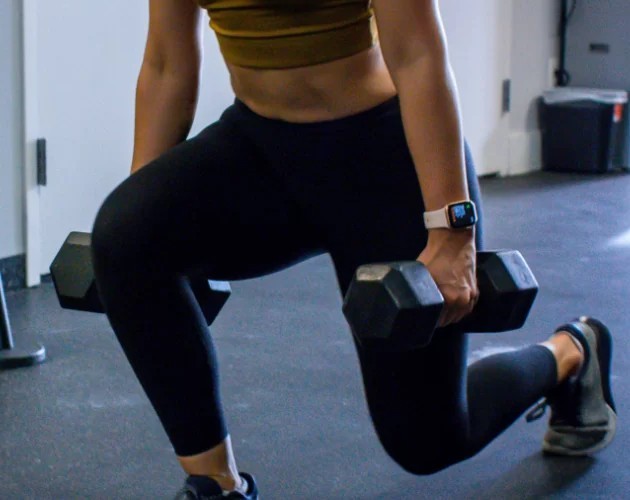Hip and Knee Pain Relief Brooklyn
Move with Ease Again – Find Relief for Your Hip and Knee Pains
Physical Therapy Can Help You Move Comfortably!
Do you ever worry that your knees will “give out” from beneath you while standing? Do you have trouble sleeping or getting out of bed in the morning because of hip pain? If so, know that you are not alone; hip and knee pain is very common!
Hip and knee pain can seriously disrupt your life, especially if you have both at the same time. You may believe that the only way to relieve your pain is to take over-the-counter medications. However, physical therapy is a more effective option!
Whether you have hip pain, knee pain, or both, physical therapy can help you get to the bottom of your problem safely and comfortably, without the use of harmful drugs or surgery. To get back to a healthy, active lifestyle, schedule an appointment with Base Physical Therapy today!
The connection between hip and knee pain
When we’re in pain and go to the doctor to find out what’s wrong, we’re often surprised to learn that the area in question isn’t a cause for concern. This is because all of our body parts are interconnected and work together to keep us alive. Often, if your knee hurts, your hip will as well, and vice versa!
Pain in the hips and/or knees may be caused by the joints themselves, or it may be the result of an underlying condition in another part of the body.
Your hip is a ball-and-socket joint that works to support the weight of your upper body, relying on a variety of muscles and tissues to keep it mobile and stable so it can function properly.
Your knee is a hinge joint that can only move forward and backward. When you squat, your knees support six times your body weight more than your hips. Proper hip and knee movement allow you to perform complex movements such as standing, walking, running, and dancing without falling over.
The hips and knees are part of the same kinetic chain, which means they are a group of weight-bearing joints that must work in unison for the body to function properly.
As a result, issues with your knees can lead to issues with your hips, and vice versa. Stress and deterioration may be placed on another part of the kinetic chain if one part of the chain is out of balance. It’s all intertwined!
Common causes of hip and knee pain
Hip and knee pain can occur for a variety of reasons.
Because the sciatic nerve runs through both areas, hip and knee pain can occur as a result of a pinched nerve. An unbalanced posture or gait can cause abnormal stress and premature wear and tear in your hips and knees, leading to painful arthritis symptoms.
Because both hips and knees are constantly used, overuse injuries such as tendinitis and chronic muscle strain are also common. Acute injuries, such as sprains, strains, and dislocations, can also have an impact on these joints.
Some painful conditions may be limited to one or both joints. Cartilage injuries, known as labral tears, are specific to hip pain, whereas bursa sac inflammation, known as bursitis, is specific to the knee joint.
However, painful injuries that cause hip instability can also affect the knees. Tight hip flexor muscles and weak gluteus medius muscles can cause the hip to rotate inward unintentionally. This can result in painful issues like iliotibial band friction syndrome or patellofemoral stress syndrome, as well as general added stress on the knee or kneecap.
Although all of these reasons are plausible, seeing a licensed physical therapist for a thorough assessment of your condition is the best way to determine the true cause of your hip or knee pain.
What can physical therapy do for hip and knee pain relief?
You don’t have to let hip and knee pain hold you back – you can benefit from physical therapy. Our physical therapy treatments at Base Physical Therapy can help to alleviate (and even eliminate) hip and knee pain. This may prevent you from having to undergo costly and painful surgery.
One of our Union Square & Brooklyn physical therapists will examine your hip and/or knee for signs of misalignment or structural damage, as well as your stance, posture, gait, and range of motion at your first appointment.
Following your physical exam, your physical therapists will recommend a physical therapy plan for you to relieve unnatural stress and strains. They will also work to improve your overall joint function so that you can resume your normal life.
You will be given specific exercises to help relieve joint pain and stabilize your weak hip and/or knee. Exercises will vary depending on your condition; for example, those experiencing kneecap pain typically respond better to exercises that focus on strengthening both the hips and the knees, rather than just the knees.
You may also be given core strengthening exercises to help strengthen your back muscles, lower abdominal muscles, and pelvic muscles. Core exercises are intended to improve your posture, in addition to balancing the weight on both sides of your body.
Additional specialized treatments (such as mobilizations to improve joint movement or other soft tissue treatments that relieve pain and promote healing of damaged hip and/or knee tissue) may also be added to your recovery plan as your physical therapist sees fit.
Ready to find relief?
It’s time to take a stand against your hip and knee pain; get started on the road to long-term pain relief today!
To speak with one of our dedicated physical therapists, contact Base Physical Therapy today. You’re in good hands at our Union Square & Brooklyn physical therapy practice!
Sources:
- https://www.arthritis.org/about-arthritis/types/osteoarthritis/
- https://www.moveforwardpt.com/Resources/Detail/5-exercises-to-reduce-knee-pain
- https://www.health.harvard.edu/healthbeat/exercise-for-stronger-knees-and-hips
- https://www.moveforwardpt.com/SymptomsConditionsDetail.aspx?cid=089d992a-4c46-4fe0-9fbd-52069837345a
- https://www.moveforwardpt.com/SymptomsConditionsDetail.aspx?cid=f6dfe597-2f7d-4f1e-9aff-67694dca085f

